The Top Ten Sounding Out! Posts of 2018!

For your end-of-the year reading pleasure, here are the Top Ten Posts of 2018 (according to views as of 12/4/18). Visit this brilliance today–and often!–and know more fire is coming in 2019!
***

J. Martin Vest
In the early 1870s a talking machine, contrived by the aptly-named Joseph Faber appeared before audiences in the United States. Dubbed the “talking head” by its inventor, it did not merely record the spoken word and then reproduce it, but actually synthesized speech mechanically. It featured a fantastically complex pneumatic system in which air was pushed by a bellows through a replica of the human speech apparatus, which included a mouth cavity, tongue, palate, jaw and cheeks. To control the machine’s articulation, all of these components were hooked up to a keyboard with seventeen keys— sixteen for various phonemes and one to control the Euphonia’s artificial glottis. Interestingly, the machine’s handler had taken one more step in readying it for the stage, affixing to its front a mannequin. Its audiences in the 1870s found themselves in front of a machine disguised to look like a white European woman.[. . .Click here to read more!]

9).Mixtapes v. Playlists: Medium, Message, Materiality
Mike Glennon
The term mixtape most commonly refers to homemade cassette compilations of music created by individuals for their own listening pleasure or that of friends and loved ones. The practice which rose to widespread prominence in the 1980s often has deeply personal connotations and is frequently associated with attempts to woo a prospective partner (romantic or otherwise). As Dean Wareham, of the band Galaxie 500 states, in Thurston Moore’s Mix-Tape: The Art of Cassette Culture, “it takes time and effort to put a mix tape together. The time spent implies an emotional connection with the recipient. It might be a desire to go to bed, or to share ideas. The message of the tape might be: I love you. I think about you all the time. Listen to how I feel about you” (28).
Alongside this ‘private’ history of the mixtape there exists a more public manifestation of the form where artists, most prominently within hip-hop, have utilised the mixtape format to the extent that it becomes a genre, akin to but distinct from the LP. As Andrew “Fig” Figueroa has previously noted here in SO!, the mixtape has remained a constant component of Hip Hop culture, frequently constituting, “a rapper’s first attempt to show the world their skills and who they are, more often than not, performing original lyrics over sampled/borrowed instrumentals that complement their style and vision.” From the early mixtapes of DJs such as Grandmaster Flash in the late ’70s and early ’80s, to those of DJ Screw in the ’90s and contemporary artists such as Kendrick Lamar, the hip-hop mixtape has morphed across media, from cassette to CDR to digital, but has remained a platform via which the sound and message of artists are recorded, copied, distributed and disseminated independent of the networks and mechanics of the music and entertainment industries. In this context mixtapes offer, as Paul Hegarty states in his essay, The Hallucinatory Life of Tapes (2007), “a way around the culture industry, a re-appropriation of the means of production.” [. . .Click here for more!]

8).My Music and My Message is Powerful: It Shouldn’t be Florence Price or “Nothing”
Samantha Ege
Flashback to the second day of the recent Gender Diversity in Music Making Conference in Melbourne, Australia (6-8 July 2018). In a few hours, I will perform the first movement of the Sonata in E minor for piano by Florence Price(1887–1953). In the lead-up, I wonder whether Price’s music has ever been performed in Australia before, and feel honored to bring her voice to new audiences. I am immersed in the loop of my pre-performance mantra:
My music and message is powerful, my music and message is powerful.
Repeating this phrase helps me to center my purpose on amplifying the voice of a practitioner who, despite being the first African-American woman composer to achieve national and international success, faced discrimination throughout her life, and even posthumously in the recognition of her legacy.
In Price’s time, there were those in positions of privilege and power who listened to her music and gave her a platform. One such instance was Frederick Stock of the Chicago Symphony Orchestra and his 1933 premier of her Symphony in E minor. But there were times when her musical scores were met with silence. For example, when she wrote to Serge Koussevitzky of the Boston Symphony Orchestra requesting that he hear her music, the letter remained unanswered. There was a notable intermittency in how Price was heard, which continues today. It seems most natural for mainstream platforms to amplify her voice in months dedicated to women and Black history; any other time of the year appears to require more justification. And so, as I am repeating this mantra—my music and message is powerful—I am attempting to de-centre my anxieties, and center my service to amplifying Price’s voice through an assured performance . [. . .Click here for more!]

7). “Most pleasant to the ear”: W. E. B. Du Bois’s Itinerant Intellectual Soundscapes
Phillip Sinitiere
Upon completing a Ph.D. in history at Harvard in 1895, and thereafter working as a professor, author, and activist for the duration of his career until his death in 1963, Du Bois spent several months each year on lecture trips across the United States. As biographers and Du Bois scholars such as Nahum Chandler, David Levering Lewis, and Shawn Leigh Alexander document, international excursions to Japan in the 1930s included public speeches. Du Bois also lectured in China during a global tour he took in the late 1950s.
In his biographical writings, Lewis describes the “clipped tones” of Du Bois’s voice and the “clipped diction” in which he communicated, references to the accent acquired from his New England upbringing in Great Barrington, Massachusetts. Reporter Cedric Belfrage, editor of the National Guardian for which Du Bois wrote between the 1940s and 1960s, listened to the black scholar speak at numerous Guardian fundraisers. “On each occasion he said just what needed saying, without equivocation and with extraordinary eloquence,” Belfrage described. “The timbre of his public-address voice was as thrilling in its way as that of Robeson’s singing voice. He wrote and spoke like an Old Testament prophet.” George B. Murphy heard Du Bois speak when he was a high school student and later as a reporter in the 1950s; he recalled the “crisp, precise English of [Du Bois’s] finely modulated voice.” [. . .Click here for more]

6.) Beyond the Grave: The “Dies Irae” in Video Game Music
Karen Cook
For those familiar with modern media, there are a number of short musical phrases that immediately trigger a particular emotional response. Think, for example, of the two-note theme that denotes the shark in Jaws, and see if you become just a little more tense or nervous. So too with the stabbing shriek of the violins from Psycho, or even the whirling four-note theme from The Twilight Zone. In each of these cases, the musical theme is short, memorable, and unalterably linked to one specific feeling: fear.
The first few notes of the “Dies Irae” chant, perhaps as recognizable as any of the other themes I mentioned already, are often used to provoke that same emotion. [. . .Click here for more!]
5). Look Away and Listen: The Audiovisual Litany in Philosophy
Robin James
According to sound studies scholar Jonathan Sterne in The Audible Past, many philosophers practice an “audiovisual litany,” which is a conceptual gesture that favorably opposes sound and sonic phenomena to a supposedly occularcentric status quo. He states, “the audiovisual litany…idealizes hearing (and, by extension, speech) as manifesting a kind of pure interiority. It alternately denigrates and elevates vision: as a fallen sense, vision takes us out of the world. But it also bathes us in the clear light of reason” (15). In other words, Western culture is occularcentric, but the gaze is bad, so luckily sound and listening fix all that’s bad about it. It can seem like the audiovisual litany is everywhere these days: from Adriana Cavarero’s politics of vocal resonance, to Karen Barad’s diffraction, to, well, a ton of Deleuze-inspired scholarship from thinkers as diverse as Elizabeth Grosz and Steve Goodman, philosophers use some variation on the idea of acoustic resonance (as in, oscillatory patterns of variable pressure that interact via phase relationships) to mark their departure from European philosophy’s traditional models of abstraction, which are visual and verbal, and to overcome the skeptical melancholy that results from them. The field of philosophy seems to argue that we need to replace traditional models of philosophical abstraction, which are usually based on words or images, with sound-based models, but this argument reproduces hegemonic ideas about sight and sound. [. . .Click here to read more!]

4). becoming a sound artist: analytic and creative perspectives
Rajna Swaminathan
Recently, in a Harvard graduate seminar with visiting composer-scholar George Lewis, the eminent professor asked me pointedly if I considered myself a “sound artist.” Finding myself put on the spot in a room mostly populated with white male colleagues who were New Music composers, I paused and wondered whether I had the right to identify that way. Despite having exploded many conventions through my precarious membership in New York’s improvised/creative music scene, and through my shift from identifying as a “mrudangam artist” to calling myself an “improviser,” and even, begrudgingly, a “composer” — somehow “sound artist” seemed a bit far-fetched. As I sat in the seminar, buckling under the pressure of how my colleagues probably defined sound art, Prof. Lewis gently urged me to ask: How would it change things if I did call myself a sound artist? Rather than imposing the limitations of sound art as a genre, he was inviting me to reframe my existing aesthetic intentions, assumptions, and practices by focusing on sound.
Sound art and its offshoots have their own unspoken codes and politics of membership, which is partly what Prof. Lewis was trying to expose in that teaching moment. However, for now I’ll leave aside these pragmatic obstacles — while remaining keenly aware that the question of who gets to be a sound artist is not too distant from the question of who gets to be an artist, and what counts as art. For my own analytic and creative curiosity, I would like to strip sound art down to its fundamentals: an offering of resonance or vibration, in the context of a community that might find something familiar, of aesthetic value, or socially cohesive, in the gestures and sonorities presented. [. . .Click here for more!]

Eddy Francisco Alvarez Jr.
How Many Latinos are in this Motherfucking House? –DJ Irene
At the Arena Nightclub in Hollywood, California, the sounds of DJ Irene could be heard on any given Friday in the 1990s. Arena, a 4000-foot former ice factory, was a haven for club kids, ravers, rebels, kids from LA exurbs, youth of color, and drag queens throughout the 1990s and 2000s. The now-defunct nightclub was one of my hang outs when I was coming of age. Like other Latinx youth who came into their own at Arena, I remember fondly the fashion, the music, the drama, and the freedom. It was a home away from home. Many of us were underage, and this was one of the only clubs that would let us in.
Arena was a cacophony of sounds that were part of the multi-sensorial experience of going to the club. There would be deep house or hip-hop music blasting from the cars in the parking lot, and then, once inside: the stomping of feet, the sirens, the whistles, the Arena clap—when dancers would clap fast and in unison—and of course the remixes and the shout outs and laughter of DJ Irene, particularly her trademark call and response: “How Many Motherfucking Latinos are in this Motherfucking House?,” immortalized now on CDs and You-Tube videos.
Irene M. Gutierrez, famously known as DJ Irene, is one of the most successful queer Latina DJs and she was a staple at Arena. Growing up in Montebello, a city in the southeast region of LA county, Irene overcame a difficult childhood, homelessness, and addiction to break through a male-dominated industry and become an award-winning, internationally-known DJ. A single mother who started her career at Circus and then Arena, Irene was named as one of the “twenty greatest gay DJs of all time” by THUMP in 2014, along with Chicago house music godfather, Frankie Knuckles. Since her Arena days, DJ Irene has performed all over the world and has returned to school and received a master’s degree. In addition to continuing to DJ festivals and clubs, she is currently a music instructor at various colleges in Los Angeles. Speaking to her relevance, Nightclub&Bar music industry website reports, “her DJ and life dramas played out publicly on the dance floor and through her performing. This only made people love her more and helped her to see how she could give back by leading a positive life through music.” [. . .Click here for more!]

2). Canonization and the Color of Sound Studies
Budhaditya Chattopadhyay
Last December, a renowned sound scholar unexpectedly trolled one of my Facebook posts. In this post I shared a link to my recently published article “Beyond Matter: Object-disoriented Sound Art (2017)”, an original piece rereading of sound art history. With an undocumented charge, the scholar attacked me personally and made a public accusation that I have misinterpreted his work in a few citations. I have followed this much-admired scholar’s work, but I never met him personally. As I closely read and investigated the concerned citations, I found that the three minor occasions when I have cited his work neither aimed at misrepresenting his work (there was little chance), nor were they part of the primary argument and discourse I was developing.
What made him react so abruptly? I have enjoyed reading his work during my research and my way of dealing with him has been respectful, but why couldn’t he respect me in return? Why couldn’t he engage with me in a scholarly manner within the context of a conversation rather than making a thoughtless comment in public aiming to hurt my reputation?
Consider the social positioning. This scholar is a well-established white male senior academic, while I am a young and relatively unknown researcher with a non-white, non-European background, entering an arena of sound studies which is yet closely guarded by the Western, predominantly white, male academics. This social divide cannot be ignored in finding reasons for his outburst. I immediately sensed condescension and entitlement in his behavior. [. . .Click here for more!]

1). Botanical Rhythms: A Field Guide to Plant Music
Carlo Patrão
Only overhead the sweet nightingale
Ever sang more sweet as the day might fail,
And snatches of its Elysian chant
Were mixed with the dreams of the Sensitive Plant
Percy Shelley, The Sensitive Plant, 1820
ROOT: Sounds from the Invisible Plant
Plants are the most abundant life form visible to us. Despite their ubiquitous presence, most of the times we still fail to notice them. The botanists James Wandersee and Elizabeth Schussler call it “plant blindness, an extremely prevalent condition characterized by the inability to see or notice the plants in one’s immediate environment. Mathew Hall, author of Plants as Persons, argues that our neglect towards plant life is partly influenced by the drive in Western thought towards separation, exclusion, and hierarchy. Our bias towards animals, or zoochauvinism–in particular toward large mammals with forward facing eyes–has been shown to have negative implications on funding towards plant conservation. Plants are as threatened as mammals according to Kew’s global assessment of the status of plant life known to science. Curriculum reforms to increase plant representation and engaging students in active learning and contact with local flora are some of the suggested measures to counter our plant blindness.
Participatory art including plants might help dissipate plants’ invisibility. Some authors argue that meaningful experiences involving a multiplicity of senses can potentially engage emotional responses and concern towards plants life. In this article, I map out a brief history of the different musical and sound art practices that incorporate plants and discuss the ethics of plant life as a performative participant. [. . .Click here for more!]
—
Featured Image: “SO! stamp” by j. Stoever
—
 REWIND! . . .If you liked this post, you may also dig:
REWIND! . . .If you liked this post, you may also dig:
The Top Ten Sounding Out! Posts of 2017!
The Top Ten Sounding Out! Posts of 2016!
The Top Ten Sounding Out! Posts of 2015!
Blog-o-versary Podcast EPISODE 62: ¡¡¡¡RESIST!!!!
Sound the Alarm: Blog-O-Versary 9.0
** Click here if you want to SOUND THE ALARM and listen to the mix already!! You can also scroll down following this post**
⏰⏰⏰⏰⏰⏰⏰⏰⏰⏰⏰⏰⏰⏰⏰⏰⏰⏰⏰⏰⏰⏰⏰⏰⏰⏰⏰⏰⏰⏰
“BRRRRRRRIIIIIIINNNNG”
is the line–and the sound–that opens Richard Wright’s 1940 wake-up-call to America, Native Son, a novel about the systemic reaches of structural racism and what happens when it works as intended: funneling privilege to white people and dealing losses–in housing, economics, education, employment, the legal system, and overall mental, physical, and emotional health and life quality–to people of color. There have been moments in the 75+ intervening years since Wright’s novel topped best seller lists where it’s felt like folks had finally heard this alarm loud and clear; right now it seems like too many have just been repeatedly hitting snooze instead of choosing to get–and stay–woke.
But just because some folk’s can’t, won’t–or choose not–to hear it is not at all reason to stop sounding the alarm, and Sounding Out! certainly isn’t going to stop chiming in and amplifying its urgency, especially in this current moment. It has been our mission since we began in 2009 to encourage scholarship about and via sound that helps us all do the work necessary to listen “bone-deep in the deep of bones” to that “BRRRRRRRIIIIIIINNNNG” (thank you Fred Moten, for that stunning description of listening in In the Break, and so much more).
To listen to it and, we hope, to ACT.
We are now “nine and feeling fine,” in spite of it all, still sounding the alarm within our field and reverberating to other disciplines, inside, through, and beyond the hyperpoliced borders of the US, and at the intersection of multiple social identities: race sexuality class gender nation citizenship status. Now, more than ever, we are grateful for the work we do and the platform we have built–and we are honored to be part of the wonderful, brilliant, and powerful community who sustains us and who’s always out there, listening and doing that work. It’s been a breakthrough year for sound studies brilliance; we have actually received more unsolicited submissions this year than in previous years combined (!!!). Keep it flowing–we’ll begin setting the 2019 schedule soon!
Just a sampling of what (and where) the year nine cohort brought you: to an art installation on the streets of Mexico City, to Australia for a conversation on sound and the law and an open letter about race, power, and equity in academia, to K-12 classrooms all over the US in a Liana Silva-edited forum on sonic pedagogy, to Argentina to listen to the “song of the summer,” to Russia to listen in to the sounds of World Cup 2018, to a galaxy far, far away, to Canada’s radio waves to hear traces of “The Idea of North,” to the contested political space of the womb, to Hamilton, to the paisa bars, mosh pits, hardcore shows, tarimas, and 1980’s flashbacks of Chicana Soundscapes (thank you Michele Habell-Pallan for curation and the intro to this forum!), and to indigenous peoples’ sound from Mt. Scott to Standing Rock.
And of course we must give special props and the deepest of gratitude to guest editors Praseeda Gopinath and Monika Mehta (who brought you the groundbreaking Gendered Soundscapes of India forum), to our regular writers Regina Bradley, Justin Burton, and Robin James who bring it three times a year, to our Fall 2017 intern James “DJ Tasty” Tlsty who brought you “Listening In With Sounding Out!” on WHRW (and our podcast stream) and our spring 2018 team, Shauna Bahssin and Allie Young, who brought copy-editing expertise and respectively, posted on a 24-Hour Drone Festival in upstate NY, and created a podcast (airing on our podcast stream very soon!) about womxn’s experiences in the music industry.
To all our writers, readers, supporters, retweeters, sharers, teachers, and word-of-mouth fans: Thank you, thank you, thank you. Gracias por todo. Let’s continue blowing it to full watts in year 10.
–JLS, LMS, and AT
⏰⏰⏰⏰ SO! 2016-2017 Highlight Reel⏰⏰⏰⏰⏰
- Justin Burton‘s book, Posthuman Rap (Oxford UP), was published fall 2017, and Justin successfully applied for tenure spring 2018.
- Karen Cook is a recipient of an inaugural ACLS Professional Development Grant, and presented some recent work at the annual Medieval-Renaissance Music Conference in Maynooth, Ireland in July 2018.
- This year, Robin James assumed co-editorship (with Eric Weisbard) of the Journal of Popular Music Studies and she wants to encourage SO! writers and readers to submit their article-length work. In addition to writing for SO!, she also published an article on post-feminism and electronic dance music. She keynoted the 2017 IASPM-International conference and the Future/Present: Current Practices in Pop Music Studies conference in Uppsala, Sweden.
- Monika Mehta published “Fan and its Paratexts,” Dossier on Fan, in Framework (January, 2018) and “Streaming Hotstar Originals” for the theme week Global Television Streaming, edited by Jasmine Mitchell and Lisa Patti, for in media res: a media commons project (April 2018). She also co-edited SO!‘s forum Gendered Sounds of India with Praseeda Gopinath and co-wrote the introduction with her as well.
- For 2018, Marlen Rios-Hernandez will be at the Latinx Studies Association (LSA) at D.C. presenting “‘How Many Queers Are Here Tonight?’: The AIDS Epidemic and Punk as Contagion From Gobbing, Cruising, to Los Frikis” as part of the “Performing Dissidence: Social Change and the Stage in Musical Performance” panel. She will be at this years American Studies Association (ASA) in Atlanta presenting a piece entitled “‘We Will Bury You!’ Listening For Chicana Punk and Other Subaltern Queer Auralities on Vinyl” on the “Emergent Auralities: Subaltern Sounds in Latinx Cultural Production and Performance” panel. Moving forward, she’s a recipient of the American Association of University Women (AAUW) year long dissertation fellowship and intend to graduate by Spring 2019.
- Tara Rodgers just put out a solo record as Analog Tara called Fundamentals–a sample is on this year’s SO! mix! Thank you TR!–and was featured on NPR and in the Washington Post!
- SO! Ed-in Chief Jennifer Lynn Stoever just returned from amazing methodology/methods training at the Voces Oral History Institute at the University of Texas-Austin. In Spring 2018, she completed a longterm public sound art project called The Binghamton Historical Soundwalk (with co-teacher Monteith McCollum, community partner Susan Sherwood + TechWorks Binghamton, amazing students, and seed grants from Binghamton University and the Whiting Foundation). You can read more about it in the (free) collection Listening to the City Toolkit: Engaging and Amplifying Unheard Voices Through Creative Practice from the MIT Colab Project that dropped in Spring 2018. Earlier this summer, she published two online essays: “The Sonic Color Line, Black Women, and Police Violence, in a special forum on Sandra Bland on Black Perspectives, the journal of the African American Intellectual History Society (AAIHS), and “Drake vs. the Beatles? Time to retire rap vs. rock cliché,” for CNN Opinion. She’ll be heading to Melbourne, Australia in late August 2018 to give talks as part of the Eavesdropping Art Festival coordinated by the Ian Potter Museum of Art, Liquid Architecture, and the Melbourne Law School. Her nine-year-old son will be attending as well, enjoying art and keeping watch for all the dangerous animals he’s heard about on the Discovery Channel.
And remember, the “notes” on our Facebook page is *still the best place to hear about calls for art, calls for posts, and upcoming conferences, shows, and volumes in sound studies. “Like” us here and please continue to keep us in the loop regarding new projects. We love to signal boost, as you can probably tell by our very active Twitter feed!
Click here for Sounding Out!‘s Blog-O-Versary “Sound the Alarm” mix 9.0 with track listing (and of course which writers suggested which songs)!
—
Jennifer Lynn Stoever is co-founder and Editor-in-Chief of Sounding Out! She is also Associate Professor of English at Binghamton University, lead organizer of The Binghamton Historical Soundwalk Project and author of The Sonic Color Line: Race and the Cultural Politics of Listening (NYU Press, 2016).
—
—
REWIND! . . .If you liked this post, you may also dig:
- 2017
- 2016
- 2015
- 2014
- 2013
- 2012
- 2011
- 2010
- 2017 “!!!!Resist!!!!” Blog-O-Versary mix 8.0
- 2016 Blog-O-Versary “!!!!!!!” mix 7.0
- 2015 Blog-o-Versary 6.0 Keep on Pushing! (Our 400th post!!)
- 2014 #flawless 5.0 celebration and mix
- 2013 Blog-o-Versary 4.0: Solid Gold Summer Countdown!
- 2012 #Blog-O-Versary 3.0: Can’t Stop Won’t Stop (The Awesomeness)!
- 2011 “Awesome Sounds from a Future Boombox” 2.0
- 2010 First Blog-O-Versary party mix: A Celebration of Awesomeness



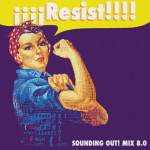
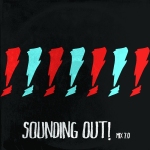
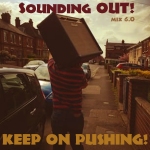
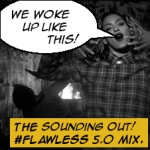


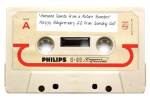
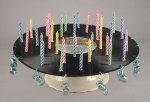
















Recent Comments